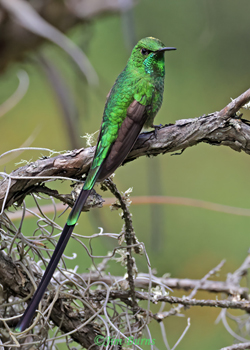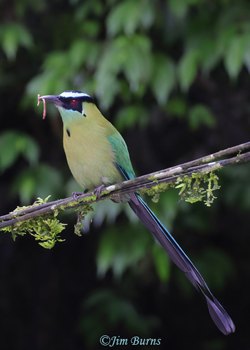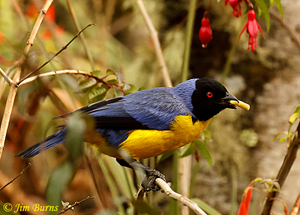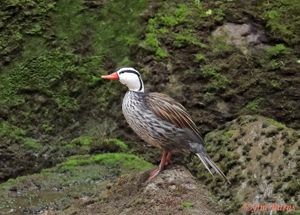 Green-tailed Trainbearer male with pollen on crown--1001
Green-tailed Trainbearer male with pollen on crown--1001
Andean Motmot with worm--1000
As things turned out we didn’t arrive in Lima until 5:00am instead of the scheduled 11:00pm but, hey, at least the doors didn’t blow off the airplane over Central America. And, for a long awaited cultural experience, we did manage to see a few of Peru’s plethora of stunning bird species. Our guide had tantalized us with the possibility of an Andean Condor flyover the day we toured the ruins, but it was not to be despite our altitude and my searching the skies. We did see an Incan Wren, but rain forest wrens don’t pop out and pose, so photography at the actual site was just . . . cultural.
Our birding expectations for this trip were low, a good thing as it turned out, for here’s how these things go. We did, in fact, finally see one of Peru’s twenty-four wren species and I photographed it well, but it was only a House Wren, Troglodytes aedon, same as North America’s most common wren I saw daily in our neighborhood growing up way before I was even a birder. I must say, though, that Peru’s House Wren, is noticeably lighter than ours, with less contrast, and almost no barring on the belly. I don’t do subspecies, but this has to be a different subspecies.
It wasn’t until we left Machu Picchu that we began to encounter some of the trip’s avian highlights. When we have birded in Central and South America I’ve always left my preference for raptors at home and let myself go nuts over the unexpected colors and shapes to be seen in the tropics. That said, and knowing we had already seen the spectacular Andean Cock-of-the-Rock on our aborted trip to Peru in 2019, I was hoping for a few hummingbirds, perhaps motmots and toucans, and some tanagers and cotingas.
As it turned out, hummingbirds were the most memorable, and I can get you excited about those by only mentioning the names of the four most outstanding—Giant Hummingbird (eight inches long!), Sparkling Violetear (three colors as gorgeous as they sound), Green-tailed Trainbearer (its iridescent tail half again the length of its body), and Bearded Mountaineer (its gorget green and purple, its long black and white tail deeply forked). The mountaineer was the only Peru endemic for the trip.
We saw only one of Peru’s motmots, the Andean Motmot, its long, racquet-tipped tail a powdery blue fading into purple on top, dark purple underneath. The best part of this observation was watching this large, rather ungainly looking bird swoop from perches on high vines down to the forest floor to snatch up long red worms.
We dipped on toucans and cotingas, but did see one of Peru’s twenty-five tanagers and one of its five mountain-tanagers. These two species, Blue-and-yellow Tanager and Hooded Mountain-Tanager, both rocked a contrasting and astonishing combination of blue and yellow, but the latter with its black face and red eye may have been the bird of the trip.
Except for the Torrent Ducks. Torrents are the tropics’ equivalent of our Harlequin Ducks, at home in the wildest, most turbulent boulder strewn mountain rivers. Harleys are our symbols of pristine, untamed waters, so it was special to see several pairs of the Torrents swimming and diving agilely in the raging, boisterous Urubamba River, running at full volume through its valley not far from Machu Picchu.
Did we see a large enough slice of Peruvian bird life to start planning another trip, birding only? As we recover from the vagaries of international travel, it’s still too soon to say, but a deciding factor may be my definitive bird guides to both Peru and Ecuador. Both are veritable tomes, way too big and weighty to fit in overhead bin luggage, the former has 14(!) pages of tanagers, the latter 131(!) species of hummingbirds! Colors and shapes mind blowing for North American birders. Stay tuned.
Hooded Mountain-Tanager

Torrent Duck male loafing on mossy rock